Introduction to CBC Test Tube Colors
When you visit a lab for a blood test, you may notice different colored tubes used for collecting samples. Understanding the significance of these colors, particularly in a CBC test tube color, is essential for both patients and healthcare providers. Each color corresponds to specific additives that affect how the sample is processed and what tests can be performed.
In the realm of laboratory testing, clarity about tube colors helps ensure accurate results and appropriate handling of samples. In this article, we will explore the meaning behind each color of the CBC test tubes. We will also discuss the importance of using the correct tube for specific tests, how these colors impact lab work, and what patients should know before undergoing blood tests.
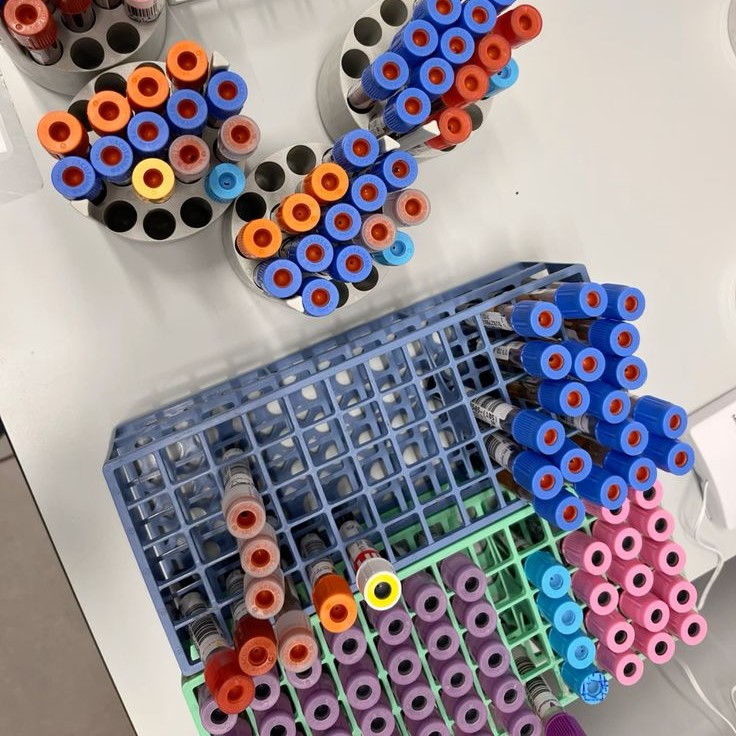
What Is a CBC Test?
A Complete Blood Count (CBC) test is a common laboratory procedure. It analyzes blood samples to assess overall health. This test plays a crucial role in diagnosing various medical conditions.
Definition and Purpose of a CBC Test
A CBC test measures different components of blood, including red cells, white cells, and platelets. It helps healthcare professionals identify infections, anemia, and other blood disorders. The test also monitors overall health during treatments or medical evaluations.
Doctors use CBC tests to check for abnormalities in blood composition. Early detection of issues can guide timely interventions. The procedure is simple and provides essential insights into bodily functions.
Common Conditions Diagnosed with a CBC Test
CBC tests help detect several conditions, such as:
- Anemia: Identifies low red blood cell count or hemoglobin levels.
- Infections: Tracks abnormal increase in white blood cells.
- Leukemia: Spotlights significant changes in blood cell production.
- Platelet Disorders: Highlights clotting issues related to abnormal platelet counts.
- Inflammatory Diseases: Reveals signs of inflammation through white cell presence.
This test also aids in tracking chronic diseases. Monitoring changes helps doctors adjust treatments effectively. Regular CBC testing ensures proper medical care and early disease detection.
The Importance of Tube Colors in Blood Collection
Blood collection is a crucial step in medical testing. The colors of test tubes play a critical role in this process. Each color is associated with a specific type of test, ensuring accurate results. Medical professionals rely on this system to avoid errors and ensure proper diagnosis.
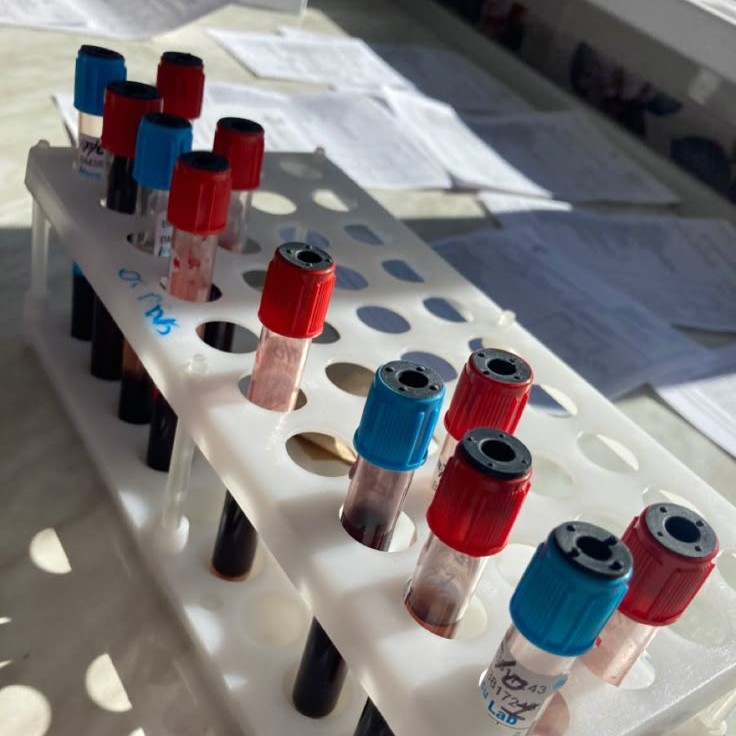
Why Tube Colors Matter in Blood Testing
The color of a test tube cap indicates its purpose. These colors guide lab technicians in selecting the right tube for a test. For a CBC test, specific tubes containing anticoagulants are essential. Incorrect tubes can compromise the test results.
Colors also indicate the type of additives inside the tube. Additives preserve blood samples, preventing clotting or degradation. This ensures the integrity of the sample during storage and testing. By using the correct tube, healthcare providers can deliver precise medical care.
How Tube Colors Indicate Test Types
Different tube colors represent different additives and tests:
- Lavender Tubes: Contain EDTA, commonly used for CBC tests.
- Red Tubes: Have no additive or clot activators, ideal for serum testing.
- Light Blue Tubes: Contain sodium citrate for coagulation studies.
For a CBC test, lavender tubes are crucial. They prevent blood from clotting, allowing accurate cell counts. Understanding the color system minimizes errors and ensures reliable test outcomes.
Common Test Tube Colors for a CBC Test
Understanding the purpose of various test tube colors is essential in blood testing. Each tube color has a specific additive that aligns with the type of test being conducted. For CBC tests, selecting the correct tube ensures accurate results and proper patient care.
Lavender Top Tubes: Significance and Usage
Lavender tubes are the standard choice for CBC tests. These tubes contain EDTA (ethylenediaminetetraacetic acid), a powerful anticoagulant. EDTA stops blood from clotting, which is crucial for accurate cell counts.
The use of lavender tubes guarantees the integrity of blood samples. Laboratories rely on these tubes for analyzing red and white blood cells, as well as platelets. Since CBC tests measure the components of whole blood, EDTA plays a vital role by preserving the sample.
Medical professionals prioritize lavender tubes for their reliability. Proper labeling and handling of these tubes further ensure dependable results.
Differences Between Tube Colors and Their Additives
Each test tube color reflects the additive inside and the intended test. Here’s a quick comparison:
- Lavender Tubes: Contain EDTA, ideal for CBC and hematology tests.
- Red Tubes: Lack additives or contain clot activators for serum tests.
- Light Blue Tubes: Use sodium citrate for coagulation studies.
These differences help prevent confusion during blood collection. They also ensure each test receives the appropriate sample conditions.
Using the wrong tube can compromise the test outcome. For example, a red tube without anticoagulants cannot preserve blood for a CBC test. Similarly, sodium citrate in a light blue tube may alter cell count analysis.
In conclusion, understanding the distinctions between tube colors and their additives is crucial. Accurate selection prevents test errors and guarantees reliable medical diagnoses.
Additives Inside CBC Test Tubes
Blood sample preservation is crucial for accurate testing. CBC test tubes contain additives that play a specific role in maintaining the sample quality. These additives prevent sample degradation and ensure reliable test results. Among them, EDTA in lavender tubes is vital for CBC tests.
Role of EDTA in Lavender Tubes
EDTA stands for ethylenediaminetetraacetic acid. It is an anticoagulant used in lavender test tubes. This additive prevents blood clotting, keeping cells in their natural state. For CBC tests, anticoagulation is critical to count red cells, white cells, and platelets accurately.
Lavender tubes with EDTA maintain the integrity of blood samples. The additive binds calcium, a key factor for clotting. By neutralizing calcium, it preserves the blood for analysis. Medical professionals trust EDTA for reliable hematology results.
How Additives Preserve Blood Samples
Additives like EDTA ensure sample stability during storage and transport. They prevent cell breakdown or contamination. Testing labs depend on additives to keep blood samples suitable for analysis.
Preservation prevents errors in test outcomes. It protects components like blood cells and plasma. For CBC tests, accurate preservation allows labs to assess cell quantities and detect abnormalities. Additives keep samples fresh and reliable for diagnostics.
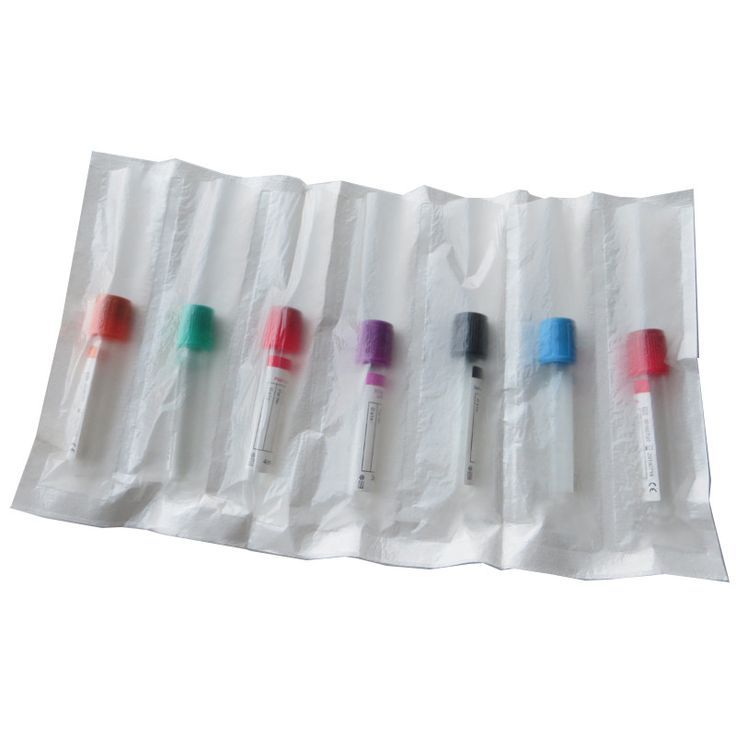
Proper Blood Collection and Handling
Blood sample collection is a sensitive process that requires attention to accuracy and care. Proper handling ensures sample integrity and reliable test results. It also prevents contamination and errors during analysis.
Steps in Blood Sample Collection
- Preparing the Patient: Verify patient identity and explain the procedure to reduce anxiety.
- Choosing the Correct Equipment: Select the appropriate cbc test tube color based on the required analysis. For CBC tests, lavender tubes with EDTA should be used.
- Sanitizing the Area: Clean the blood draw site with an alcohol wipe to prevent infection.
- Drawing Blood: Use a sterile needle to collect the sample and fill the tube to the required volume. Follow standard guidelines to avoid sample rejection.
- Labeling: Label the tube accurately with the patient’s name, date, and necessary details. Proper labeling avoids misidentification and testing errors.
- Storing the Sample: Place the sample in a temperature-controlled environment immediately after collection. This preserves its quality.
Each step plays an essential role in ensuring accurate test results. Proper training helps healthcare professionals follow standardized procedures.
Avoiding Contamination in Blood Samples
- Maintain Sterility: Use sterile needles and tubes to minimize contamination risks.
- Prevent Overhandling: Minimize contact with the sample to prevent alterations or exposure to external elements.
- Avoid Mixing Samples: Ensure separate handling for each patient. Mix-ups can lead to inaccurate diagnoses.
- Use Correct Tubes: Use specific test tubes for each test type. Lavender tubes are vital for CBC tests to maintain blood cell integrity.
- Seal and Store Properly: Securely close the tube and store it in a controlled environment to prevent degradation.
Contaminated samples can lead to compromised test results, affecting patient treatment plans. Adhering to best practices safeguards the diagnostic process and ensures optimal care.
FAQs About CBC Test Tubes and Colors
Can Tube Colors Vary Between Labs?
Yes, cbc test tube color can vary depending on the lab or manufacturer. However, standard guidelines exist for most tests, including CBC. For instance, lavender tubes, used for CBC tests, almost always include EDTA as the anticoagulant.
Despite variations, healthcare professionals are trained to understand these differences. They ensure the correct tube and additive are selected for a CBC test. Patients can consult their healthcare provider for tube-related queries to ease concerns.
What Happens if the Wrong Tube is Used?
Using the wrong test tube can lead to inaccurate results. For example, using a red tube, which lacks anticoagulants, for a CBC test may cause blood to clot and ruin the sample. Similarly, a light blue tube with sodium citrate could interfere with cell counts.
Incorrect tube selection may require resampling, delaying diagnostic processes. This is why proper training and attention to detail are critical in blood testing. Labs also implement strict checks to minimize such errors and ensure reliable results.
Tips for Patients Undergoing a CBC Test
A CBC test is a routine procedure. Patients can take specific steps to ensure smooth testing. Understanding the process and outcomes will help to reduce anxiety and increase confidence.
How to Prepare for a Smooth Test Experience
Preparation helps make the test quick and stress-free. Here are some practical tips:
- Stay Hydrated: Drink plenty of water before the test. Proper hydration makes veins easier to locate.
- Follow Instructions: Adhere to any pre-test guidelines provided by your doctor. Avoid eating if fasting is required.
- Wear Comfortable Clothing: Use a short-sleeve shirt or clothing that allows easy access to your arm.
- Relax: Try to stay calm during the procedure. Deep breaths can reduce stress and make the process smoother.
- Inform Your Doctor: Share your medical history or any medications you are using. This ensures accurate test interpretation.
- Eat After the Test: If fasting was required, have a light snack right after the procedure.
By following these steps, you can prepare effectively and avoid any discomfort.
Understanding Your Test Results
Interpreting CBC results is critical for assessing health. Here’s what you should know:
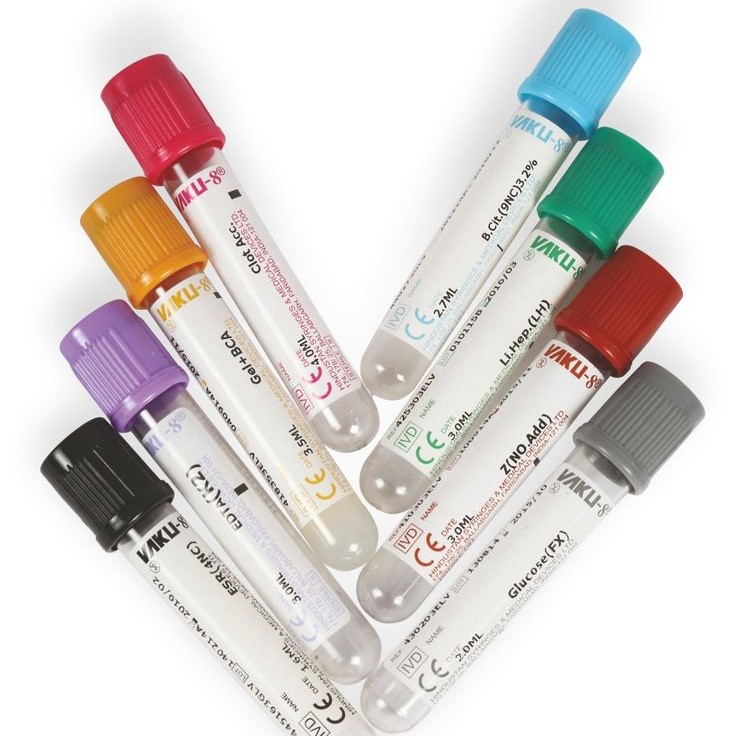
Red Blood Cells (RBC)
- Definition and Function: Red blood cells (RBCs) are crucial for transporting oxygen from the lungs to different tissues throughout the body. They contain hemoglobin, a protein that binds oxygen and enables this vital transportation.
- Normal Counts: A normal RBC count is an indicator of optimal oxygen delivery to tissues, which is essential for maintaining energy levels and overall health. Typical values can vary based on age, sex, and health status.
- Low Levels and Anemia: If the RBC count is low, it may suggest anemia, a condition characterized by insufficient healthy red blood cells. Anemia can lead to symptoms such as fatigue, weakness, and shortness of breath. Understanding the underlying cause of low RBC counts—whether due to nutritional deficiencies, chronic diseases, or bone marrow problems—is important for effective treatment.
White Blood Cells (WBC)
- Role in Immune Function: White blood cells (WBCs) are the body’s defense system, playing a crucial role in fighting infections and other diseases. They are produced in the bone marrow and circulate through the bloodstream.
- High Counts and Infections: Elevated WBC counts often indicate the presence of an infection or inflammatory process. This could be due to bacterial infections, viral infections, or other sources of inflammation in the body. Monitoring WBC counts can help healthcare providers assess the severity and nature of an illness.
- Low Levels and Immune Issues: Conversely, low WBC counts may suggest potential issues with the immune system, such as bone marrow disorders, autoimmune diseases, or the effects of certain medications. Low counts can make individuals more susceptible to infections, highlighting the importance of regular monitoring.
Platelets
- Importance in Blood Clotting: Platelets are small cell fragments that play a critical role in blood clotting. They help in the repair of damaged blood vessels and are vital for stopping bleeding.
- Adequate Levels: Normal platelet counts are essential to ensure effective clotting mechanisms within the body. Adequate levels allow the body to respond properly to injuries and prevent excessive blood loss.
- Abnormal Counts and Clotting Problems: Abnormal platelet counts, whether high or low, can indicate potential health issues. High platelet levels (thrombocytosis) may increase the risk of clotting disorders, while low levels (thrombocytopenia) may lead to difficulties in clotting and excessive bleeding. Both conditions require further investigation to determine the underlying causes.
Hemoglobin and Hematocrit
- Definition and Function: Hemoglobin is the protein in red blood cells responsible for transporting oxygen throughout the body. Hematocrit measures the proportion of blood that consists of red blood cells, giving insight into blood volume and the overall composition.
- Oxygen-Carrying Capacity: Both hemoglobin and hematocrit values are essential for assessing the oxygen-carrying capacity of the blood. Normal levels ensure that tissues receive adequate oxygen, which is crucial for metabolic processes.
-
Deviations Indicating Conditions: Deviations from normal ranges in hemoglobin and hematocrit may suggest various conditions. Low hemoglobin levels could be indicative of anemia, while elevated levels may point towards dehydration or other underlying health issues. Monitoring these values provides valuable information about an individual’s overall blood health.
Always discuss your results with a healthcare professional. They can explain anomalies and recommend further steps. Understanding your results empowers you to take charge of your health.
Conclusion: The Importance of CBC Test Tube Color
In conclusion, understanding the CBC test tube color is not merely academic; it plays a crucial role in the accuracy of blood tests and patient care. Each color-coded tube serves a specific purpose and is essential for the correct processing of samples. Knowing what each color means can help patients feel more informed and at ease during their lab visits.
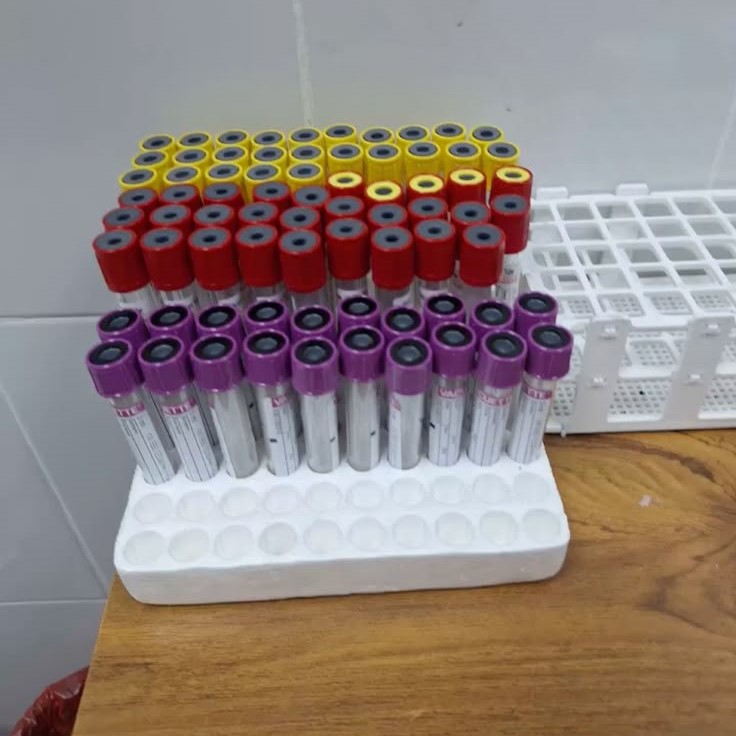
As a patient, being aware of the significance of tube colors allows better communication with healthcare professionals and supports a focus on quality care. Proper specimen collection and handling can lead to accurate diagnoses and the development of effective treatment plans.
Next time you undergo a blood test, remember that the color of the tube holding your sample is more than just a detail; it is a critical component of your health journey. Embrace the knowledge you’ve gained about the importance of test tubes and share it with others. This understanding can change the way you view laboratory tests and enhance your overall healthcare experience.




